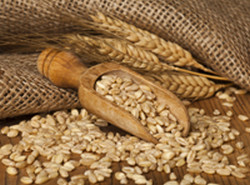Using biomass to dry cereals
The EU-funded 'Cereal excess as a renewable energy resource' (CERES) project aimed to build a novel straw burner that complied with the new EU legislation. Researchers searched for and identified an additive to improve the burn quality of straw pellets — the chosen fuel source for the prototype burner. In addition, they developed a new recipe for pellet formulation. Project members made substantial headway in development of the prototype. They identified a coating to prevent corrosion in the burner, and designed a laboratory prototype. The prototype contained a three-part flue gas scrubber to remove heavy metals, acidic gases and particulate matter. After 18 months of project research and advances, changes were made to the proposed EU legislation that would create a demand for this system. CERES thus conducted a second market analysis, which revealed that there was no longer a market for their prototype. Based on the analysis, the CERES project was cut short. Although there was no major project output, all companies involved benefited from the research conducted during the 18-month period.
Keywords
Biomass, dry cereal, industrial heating, straw, agricultural waste, renewable energy, energy resource, straw burner, pellet formation

